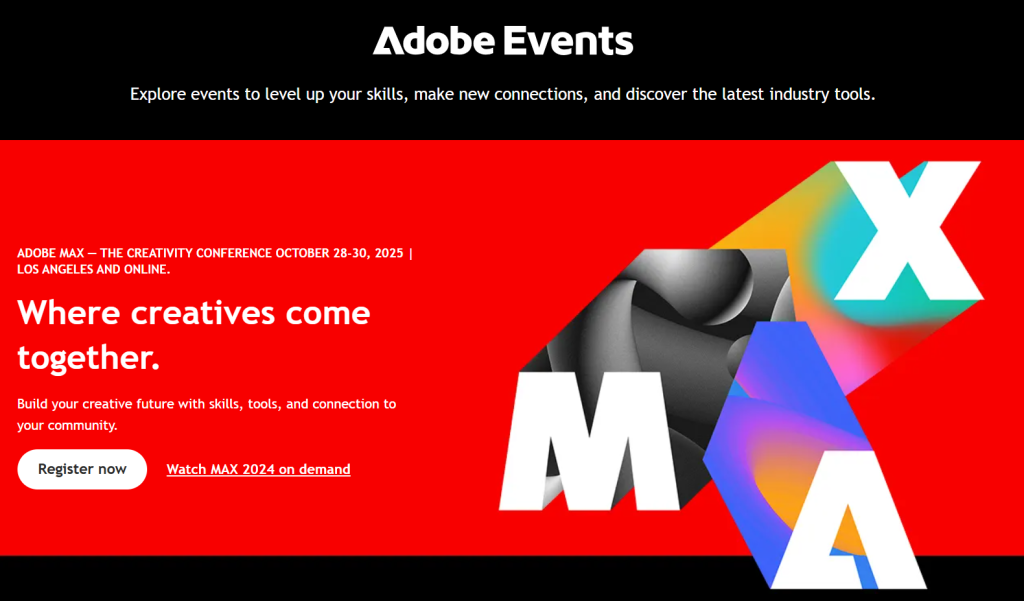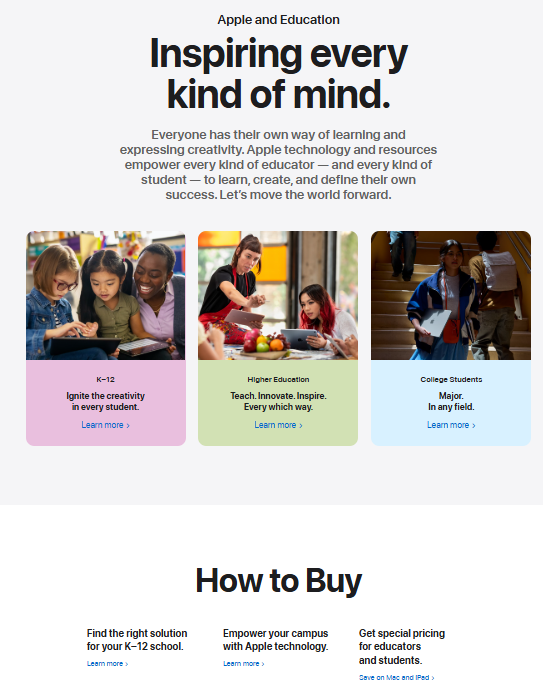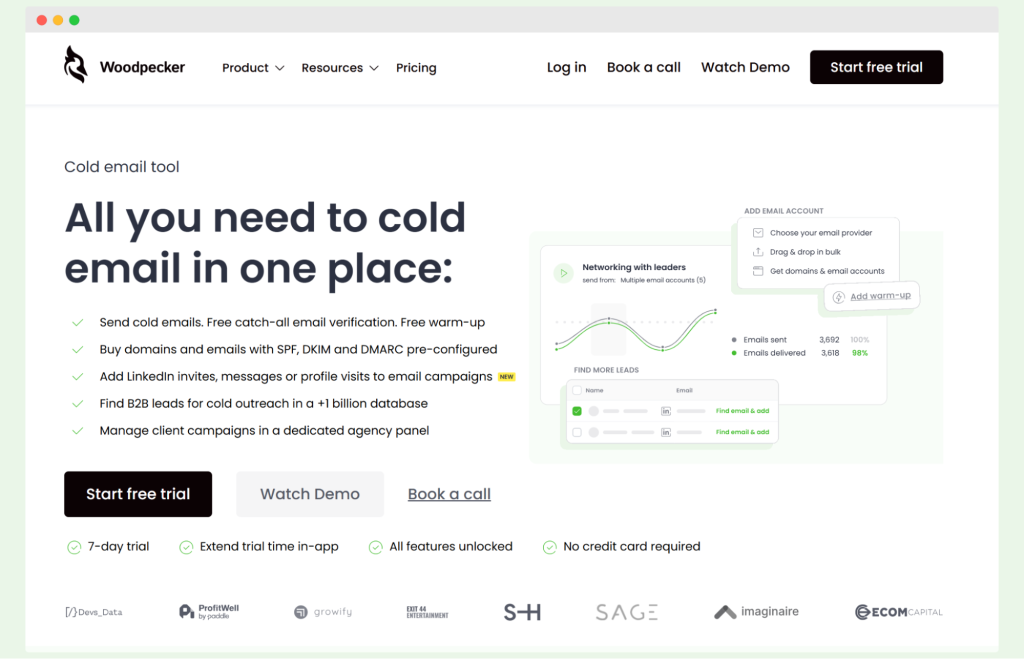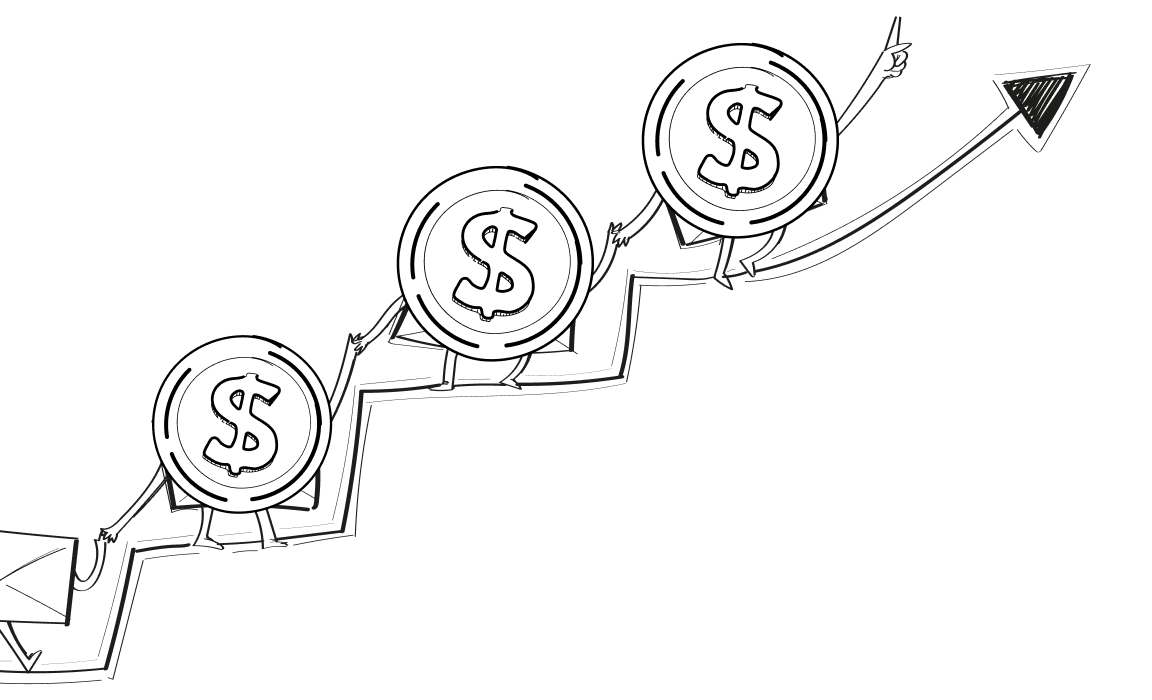B2B sales lead generation is tougher today than it was a few years ago. Buyers are more selective and competition is everywhere. For sales and marketing teams, keeping the sales pipeline full has become one of the biggest challenges in business growth.
At the same time, the stakes have never been higher. A healthy lead generation process means more qualified leads and shorter sales cycles. Without it, sales reps waste time chasing potential leads that never convert, and marketing campaigns lose impact.
I built this guide to be a modern playbook for 2025 and beyond. It explains what B2B lead generation is, why lead quality matters more than quantity, and how to adapt your sales process to today’s buyers.
You’ll see proven B2B lead generation strategies, practical examples, and tools that help sales departments acquire new leads and close deals faster.
By the end, you’ll have a clear roadmap to generate high quality leads and build a repeatable process that supports business growth.
What is B2B sales lead generation?
When I first stepped into the world of B2B sales, I thought lead generation was only about getting more names on a list. The more contacts you had, the better your chances, right?
With time, I learned it’s not about numbers. It’s about quality. One high quality lead can bring more sales growth than a hundred random names who never reply.
B2B lead generation is the process of turning strangers into prospective customers.
It starts with reaching your target audience, collecting contact data, and sharing valuable content that speaks to their pain points. From there, the sales process moves forward: marketing qualified leads become sales qualified leads, and sales reps step in to start conversations and move toward closing deals.
The difference between B2B and B2C is simple.
In B2C, you sell to one person making a quick choice. In B2B, you sell to teams of decision makers. The cycle is longer, the sales negotiations are more complex, and you need more trust before anyone becomes a paying customer.
That’s why high quality leads matter more than lead volume. With the right contact details and a good lead scoring system, sales departments can focus on the target market that truly fits. This means fewer wasted cold calls and better chances of business growth.
Why B2B sales lead generation matters in 2025-2026
- By the end of 2025, almost 90% of B2B leaders in sales and marketing teams plan to use generative AI in their daily work. Top teams already cut research time in half and see response rates rise up to three times.
- Account based marketing is proving its value. Around 87% of marketers say they see stronger ROI when they focus on the right accounts instead of spreading efforts too thin.
- Buyers are more open to sales conversations when they see relevant content. About 88% say they trust vendors that share helpful information that speaks to their pain points.
- Large B2B deals worth over $1M are moving online. More than half will be handled through digital self-serve channels as Millennial and Gen Z decision makers prefer quick online steps in the buying process.
- Almost 45% of B2B leaders say the economy is their biggest challenge. With budgets flat or shrinking for 63% of teams, sales departments need to rethink their lead generation process.
- Only 40% of companies are hiring more sales reps. Most keep headcount steady or cut staff, which increases pressure on existing sales teams to keep the sales pipeline healthy.
- 96% of marketers are already adjusting their marketing campaigns. They put more focus on acquiring leads and managing the sales funnel with smarter tactics.
- Big industry events are giving space to smaller, targeted meetups. Around 59% of marketers say they will host more focused gatherings that bring in potential customers, instead of paying for large conferences.
Types of sales qualified leads & funnels
When thinking about sales qualified leads, you need to consider the difference between a random website visitor and a true ideal customer.
- The visitor clicks, reads, and leaves.
- The ideal customer sticks around, downloads a lead magnet, and starts asking real questions.
That’s where the sales process really begins.
MQLs vs SQLs
Marketing qualified leads (MQLs) are people who react to your marketing efforts. Maybe they filled out a form on your landing page or downloaded marketing materials. They are showing interest, but they are not ready for sales negotiations yet.
For example, if someone downloads HubSpot’s free e-book on search engine optimization, HubSpot’s data analytics team marks them as an MQL.
Sales qualified leads (SQLs) are different.
These are prospects ready to speak with a sales rep. They have the right job title, the right budget, and match your target customer profile.
Think of Salesforce: when a prospect signs up for a demo of their software solutions, they move from an MQL to an SQL because the sales approach can now begin.
Inbound vs outbound leads
Inbound leads are people who come to you. They discover your software company through search engines or referrals from existing customers.
For example, Canva gets thousands (if not millions) of inbound leads daily from website visitors who find their brand while searching for marketing tools.
Outbound leads are the opposite.
Here, the sales department reaches out first. It can be through practices like cold calling or email campaigns.
LinkedIn Sales Navigator is often used by sales reps to find potential customers who match key metrics like industry, location, or company size.
Account-based funnels
Then there’s account based marketing, which focuses on a small set of high value leads instead of casting a wide net.
Imagine a marketing agency targeting Microsoft or Coca-Cola. The team builds campaigns only for those accounts, tailoring marketing automation, social selling, and even paid ads to match the needs of each decision maker. The sales funnel is narrow, but it can lead to longer sales cycles with much higher rewards.
Not all leads are equal. Thanks to knowing the difference between MQLs, SQLs, inbound, outbound, and account based funnels, you can focus your energy on the prospects that matter most.
B2B lead generation strategies
When it comes to lead generation, there are usually three clear paths: inbound, outbound, and a mix of both.
Most companies don’t stick to one forever. They shift as the market changes, or as their target customer evolves.
Inbound lead generation
Inbound feels like planting seeds. You put content into the world and wait for the right people to find it.
Take Adobe. Their tutorials and online events attract thousands of website visitors who later become prospective customers for their software solutions. By the time a sales rep steps in, the audience already knows the brand and trusts its expertise.

Slack did something similar in its early years. Instead of cold calling, it focused on making its product visible through search engines and customer referrals. Teams started using Slack because they heard about it from peers, not from sales pitches.
That’s the power of inbound: it pulls people in without pushing too hard.
Outbound lead generation
Outbound is the opposite. It’s reaching out first.
You might have seen IBM do this with targeted campaigns for high value leads. Their teams often map out job titles at large companies and build personal messages around them. The first contact might come through a call or a LinkedIn message, and then move into deeper sales negotiations.
Apple also uses outbound when it enters B2B deals.
Think about bulk iPad sales to schools or corporations. Those don’t start from a landing page. They start with direct conversations and a strong sales approach.

Outbound is about aiming at a target customer you already identified.
Hybrid lead generation
The mix is where things get interesting.
Google Cloud, for example, runs large content campaigns (inbound) but pairs them with direct outreach from sales reps (outbound). When someone joins a webinar about data analytics, it’s often followed by a personal message from a rep who already knows the prospect’s company and market reach.
Airbnb tried this hybrid model too.
They launched campaigns about renting your flat for when you are away on work trips (inbound) and then reached out to often-traveling employees with direct sales efforts (outbound).

The blend works because it feels natural: the prospect first meets the brand through useful content, then gets a timely follow-up from a real person.
Modern lead gen playbook in B2B
Seeing how B2B lead generation changed in the last few years, it feels like the rules of the game were rewritten.
What worked in 2019 doesn’t always work in 2025.
These days, four big themes stand out: personalization, multi-channel, data, and AI.
Personalization
Cold emails used to be about sending the same message to hundreds of people. Today, that’s a fast track to being ignored. Buyers expect personal outreach that speaks to their role, industry, and pain points. McKinsey found that 71% of B2B buyers expect tailored interactions, and 76% get frustrated when this doesn’t happen.
Check this out: how personalization affects cold email deliverability
Multi-channel
Sticking to a single channel feels like gambling. Prospects might miss your email but catch a LinkedIn post, or skip a webinar but click a short YouTube ad. That’s why manyB2B companies now use three or more outreach channels.
Data-driven approach
Guesswork is fading. Data analytics now powers targeting and lead scoring. Forrester’s B2B Marketing Analytics 2025 says 85% of top-performing teams use real-time analytics to guide campaigns.
Back when I worked with a software company, we tracked which landing pages brought the most high value leads and which job titles converted best. Once the sales department stopped chasing the wrong audience, the whole sales process became sharper.
AI
AI is now at the core of the sales process. Statista says 67% of B2B teams now use AI for prospecting and lead scoring, compared to just 14% in 2019. Teams are using AI to draft outreach emails, analyze contact data, and even predict which new leads are most likely to become paying customers.
Tools and platforms to generate leads in B2B in 2025 & beyond
Without a doubt, the right mix of software solutions will give you more qualified leads, cleaner data, and smoother sales negotiations.
Below, I gathered five categories that shape the modern sales pipeline.
#1 Outbound email automation
Running outbound campaigns by hand is a recipe for missed follow-ups and lost contact data. That’s why automation matters. At Woodpecker, we focus on helping B2B companies build cold email campaigns that feel personal at scale.

Sales reps can:
- send sequences with natural follow-ups,
- track replies,
- and keep deliverability high so emails land in the inbox, not the spam folder.
Woodpecker also integrates with CRMs and lead enrichment tools, making it easy to connect outreach with the rest of your sales process.
Outbound is still one of the strongest channels for acquiring high value leads, and Woodpecker is built for exactly that. Other tools exist in the space, like Mailshake or Instantly, but we’ve seen many companies rely on Woodpecker as their go-to solution for outbound sales growth.
#2 Content marketing for more leads
Inbound leads often begin with content. A strong blog or whitepaper can turn website visitors into prospective customers. Tools here help teams improve search engine optimization, reach their target audience, and track key metrics.
My recommendations:
- HubSpot: content management and marketing automation
- Semrush: SEO research and tracking
- Clearbit: enriches visitor data for better targeting
Check this out: how great content makes you persuasive
#3 Customer relationship management
Once you’ve got new leads, you need to store contact details, past interactions, and future actions. CRM systems give sales teams a full view of the sales pipeline and help align marketing efforts with sales conversations.
My recommendations:
- Capsule CRM: easy and flexible, strong fit for growing teams
- Pipedrive: visual pipeline and automation features
- HubSpot CRM: connects marketing data with sales outreach
#4 Lead enrichment for better lead quality
Before starting a sales approach, you need to know if a lead matches your ideal customer profile. Lead enrichment tools add details like job title, company size, and revenue range. This helps sales reps focus on more qualified leads.
My recommendations:
- Apollo.io: prospecting, enrichment, and outbound features
- ZoomInfo: company and contact data for reaching decision makers
- Clay: enrichment combined with workflow automation
#5 Capture tools for lead qualification
Every sales pipeline needs a steady flow of new leads. Capture tools help convert anonymous website visitors into contacts through forms, landing pages, and so on.
My recommendations:
- Typeform: interactive forms that drive responses
- involve.me: surveys and calculators for qualification
- OptinMonster: landing page and pop-up tools for list growth
Outsourced lead generation services
Having worked with both in-house sales teams and outsourced agencies, I can honestly say the experience feels very different. Outsourced lead generation services can give you speed when you need new leads fast, but they also come with trade-offs.
Some well-reviewed agencies include CIENCE, Belkins, and Martal Group.
These companies specialize in building lead lists, running outbound campaigns, and booking calls for sales reps. Reviews on sites like G2 and Clutch often mention strong account management and clear reporting.
The upside of outsourcing is quick market reach. You don’t need to hire or train new reps. You get access to ready-made processes and tested marketing materials.
But the downside is control. External teams may not capture your brand voice, and data ownership can get tricky. In-house teams, on the other hand, stay closer to the target customer and learn from every sales negotiation.
Measuring & optimizing results
Key metrics to watch include:
- Cost per lead (CPL) – how much you spend for every new contact
- MQL-to-SQL conversion – how many marketing qualified leads turn into sales qualified leads
- Pipeline velocity – how fast leads move from first touch to closing deals
- Customer acquisition cost (CAC) – the true cost of winning a paying customer
- Return on investment (ROI) – revenue gained compared to money spent
Dashboards help keep everyone aligned. The best teams track results weekly or monthly, compare them against revenue goals, and adjust the sales approach when numbers slip.
Lead generation efforts: common pitfalls to avoid
- Deliverability mistakes – sending bulk emails without warming up domains or cleaning contact data, which sends campaigns straight to spam.
- Poor ICP (ideal customer profile) – chasing leads outside the target market, which wastes time and sales resources.
- Over-automation – replacing human touch with bots everywhere. It may save time at first but kills response rates and trust.
Best practices for 2025 & beyond
The strongest sales teams I’ve seen keep these three habits:
- Iterative testing – they test subject lines, landing pages, and call scripts regularly. Small tweaks add up over longer sales cycles.
- Human touch in outreach – even with marketing automation, they keep space for personal notes, social selling, or quick calls. A prospect is more than contact data.
- Integrating AI smartly – they use AI for lead scoring, data analytics, and campaign timing, but let sales reps own the final message and build trust with prospective customers.
Effective lead generation in B2B made simple
Looking back at everything covered in this guide, one thought stands out: B2B lead generation is never finished. It’s not a single campaign or a one-time push. It’s a continuous process that shifts as buyers, markets, and sales cycles change.
The companies that succeed are the ones that treat lead generation like a system. They define their ideal customer, keep testing their sales approach, and build a stack of tools that supports the whole sales process. From inbound content to data analytics, every piece matters – but outbound email automation often sets the pace for filling the sales pipeline with high quality leads.
That’s where Woodpecker comes in.
It helps sales and marketing teams connect with prospective customers through personalized outreach, manage follow-ups, and keep deliverability strong. Paired with content tools, CRM platforms, enrichment, and capture solutions, it becomes the core of a modern lead generation engine.
B2B sales will always demand patience, human touch, and smart tactics. With the right playbook (and the right tools) your team can keep the funnel healthy, close more deals, and stay competitive in 2025 and beyond.

